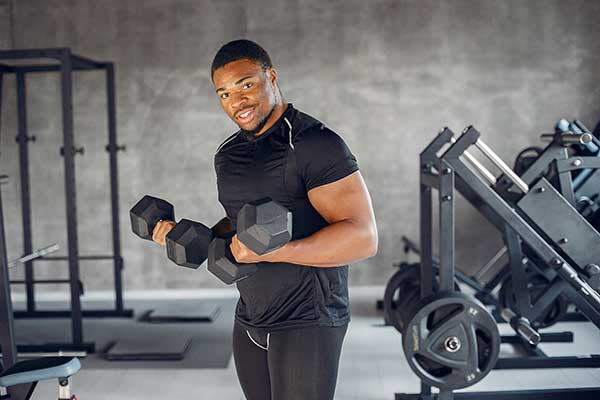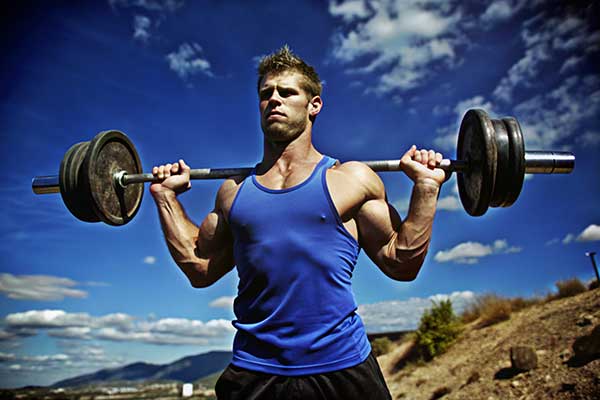What Are The Heads of The Biceps
Introduction to the Biceps Muscle
When you think of strong arms, the biceps often spring to mind. This iconic muscle not only plays a vital role in our daily movements but also captures attention with its impressive definition. Many fitness enthusiasts strive for that perfect bicep peak, yet few fully understand what lies beneath the surface. What are the heads of the biceps? The answer is more fascinating than it seems. Let’s dive into this remarkable muscle and uncover its secrets, exploring everything from anatomy to function and even effective exercises that can help you achieve your arm goals!
Understanding the Anatomy of the Biceps
The biceps brachii, commonly known as the biceps, is a prominent muscle located in the upper arm. Its name translates to “two-headed arm,” reflecting its unique structure and functionality.
Anatomically, it consists of two distinct sections: the long head and the short head. Each part originates from different sites but converges into a single tendon that attaches to the radius bone in your forearm.
The long head starts at the shoulder joint, while the short head comes from a point on your scapula. This configuration allows for diverse movements and strength applications during physical activities.
Understanding this anatomy is crucial for anyone looking to improve their fitness or performance. The interplay between these heads contributes significantly to both stability and power in various arm motions—making them essential for everyday tasks as well as athletic endeavors.
The Two Heads of the Biceps
The biceps muscle is commonly known for its impressive appearance, but it has some fascinating anatomical features. It consists of two distinct parts—referred to as heads.
The long head originates from the shoulder blade’s supraglenoid tubercle. This part runs along the outer side of the upper arm and contributes significantly to overall bicep size and definition.
On the other hand, the short head starts at the coracoid process of the scapula. It lies closer to your body and helps create that thick look when flexed.
Each head plays a unique role in mobility and strength. Understanding their differences can enhance your workout effectiveness, leading to better performance and results over time.
Different Functions of Each Head
The biceps muscle consists of two distinct heads: the long head and the short head. Each plays a unique role in arm movement.
The long head originates from the shoulder joint, allowing for greater range during overhead motions. This head is particularly engaged when performing exercises like chin-ups or pull-ups, pulling your body towards the bar.
In contrast, the short head attaches near the shoulder blade. It excels at stabilizing and controlling movements closer to your body. Exercises like preacher curls specifically target this area, emphasizing strength and definition.
Together, these heads work in harmony to facilitate various arm functions. Recognizing their different roles can enhance workout effectiveness and overall performance in daily activities.
Exercises to Target Each Head
To effectively target each head of the biceps, you need to incorporate specific exercises into your routine. For the long head, try incline dumbbell curls. This position places more emphasis on this portion as your arms stretch back.
For the short head, focus on concentration curls. These allow for maximum isolation and control, ensuring that you’re engaging this muscle fully throughout the movement.
Hammer curls are excellent for both heads but particularly benefit the brachialis and promote overall arm thickness. They’re a solid choice if you want balanced development.
Another great option is close-grip chin-ups. This compound exercise not only targets your biceps but also engages multiple upper body muscles, providing a comprehensive workout experience.
Varying grip positions can help too; switching between supinated and neutral grips will hit different fibers in each head effectively while adding variety to your training sessions.
Common Injuries and How to Prevent Them
Biceps injuries are more common than many people realize. Strains and tears can occur, especially when lifting heavy weights without proper form. Overexertion during exercises is a frequent culprit.
To prevent these injuries, always warm up before engaging in strength training. Stretching the biceps prepares the muscles for work and reduces tension.
Proper techniques matter too. Avoid swinging weights or using momentum to lift; this puts unnecessary stress on your biceps. Instead, focus on controlled movements throughout each repetition.
Listen to your body as well. If you feel pain beyond typical muscle fatigue, don’t push through it. Rest is crucial for recovery and maintaining overall arm health.
Incorporating cross-training can also reduce injury risk by preventing overuse of specific muscle groups while enhancing overall strength and flexibility.
Conclusion: Importance of Properly Training Your Biceps for Overall Arm Strength and Functionality
Properly training your biceps is essential for achieving balanced arm strength and functionality. Understanding the heads of the biceps—the long head and short head—allows you to tailor your workouts effectively. Each head plays a unique role in how your arms perform daily activities as well as during physical exercise.
By incorporating targeted exercises, you can build muscle symmetry and improve overall performance. This attention to detail not only enhances aesthetics but also supports joint health and reduces injury risk.
Focusing on both heads ensures that you’re developing functional strength. Whether you’re lifting weights or simply carrying groceries, strong biceps play a crucial part in everyday tasks. Remember, it’s not just about how much you lift; it’s about how efficiently your muscles work together.
Investing time in understanding and training these muscle groups will pay off, leading to better performance in sports, fitness routines, and daily life activities alike. Prioritize proper techniques and balanced workouts for optimal results!
- About the Author
- Latest Posts
Johnnie D. Jackow Sr., the founder and CEO of Total Body Fitness, Worldwide, has a long-standing career in the fitness industry. He began as a certified personal trainer in the mid-90s and soon after authored his first weight loss book in 1998. This led to the launch of Total Body Fitness, Nationwide in the USA at the same time. Johnnie gained recognition as the fitness guru of his time, running infomercials on local TV late at night in Houston, Texas. Over the years, he has helped more than 40,000 individuals from all over the world achieve their health and fitness goals. With over 60,000 hours of documented training in integrative functional medicine, he completed his PhD in human physiology in 2010. His primary objective is to assist people in reaching their health and fitness goals through alternative approaches rather than relying solely on conventional medicine and pharmaceutical drugs. Today, with almost three decades of experience under his belt, Johnnie continues to be a leader in health and fitness.








